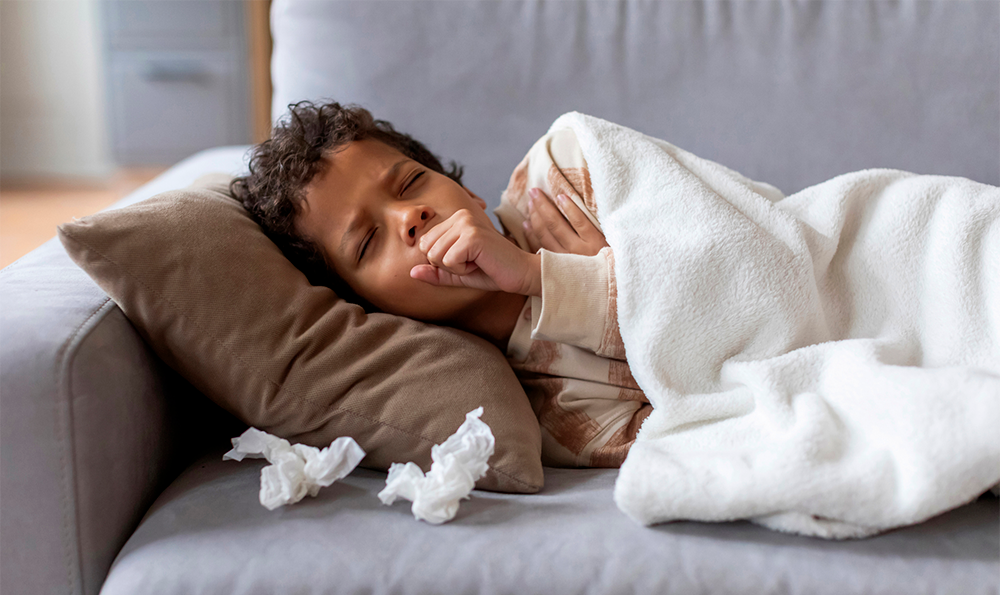Pertussis, commonly known as whooping cough, is a common infection in the United States. The Centers for Disease Control and Prevention (CDC) reported more than 32,000 cases in 2024, with more than 90% of cases diagnosed in children less than five years old.
“Infections from pertussis are continuing to rise to levels we haven’t seen since before the COVID-19 pandemic,” says Daniela Castano, MD, pediatrician at Atlantic Health System. “While we typically see a spike in infections during the summer and fall months, the infection can be seen year-round. Awareness of whooping cough, its symptoms and prevention are important to stop its spread.”
What is pertussis?
Caused by bacteria, whooping cough is very contagious and spreads through contact with droplets when an infected person coughs or sneezes. The infection is most often seen in children and is particularly dangerous in infants younger than 12 months or in people with weak or suppressed immune systems.
“One of the big struggles with whooping cough is the long incubation period. It can take up to 10 days for someone who is infected to have symptoms,” says Dr. Castano. “During that time the infection may look like a simple cold, but can spread to others, which is why it’s so important to recognize the symptoms and get treatment as soon as possible.”
The signs and symptoms of whooping cough
Dr. Castano explains that no test is typically needed to diagnose pertussis infection. She says that the whooping cough typically presents in three different stages.
1. Catarrhal phase occurs when someone is first infected, and symptoms can last for one or two weeks. During this first stage, older children, teens and adults typically have symptoms that are mistaken for the common cold, including:
- Runny nose
- Nasal congestion
- Low-grade fever
- Cough that becomes worse over time
2. Paroxysmal phase is the second phase of infection and is the time when the infection is most contagious. Lasting anywhere from two to eight weeks, symptoms during this time often include:
- Back-to-back or non-stop coughing fits
- Characteristic whooping sound when taking a breath after coughing
Young children might also experience the following symptoms:
- Difficulty breathing
- Vomiting after coughing
3. Convalescent phase is an indication that your symptoms are improving. Many people will have a cough that lingers for up to six months after the start of their infection with whooping cough. During this final phase, Dr. Castano says that infection with a cold or flu can occur and make any lingering symptoms of pertussis much worse.
Infections in infants are concerning, particularly in babies less than four months old. When children so young have pertussis, Dr. Castano says that symptoms can be subtle in the initial phase and become more severe in the paroxysmal phase. This can include long pauses in breathing, gasping for air, gagging and vomiting. Complications include difficulty breathing, pneumonia, seizures and low blood pressure, among others. Fevers are rarely a symptom of whooping cough. As a precaution, infants younger than four months who are diagnosed with whooping cough are typically hospitalized due to the high risk of respiratory complications and rapid clinical decline.
Treating and preventing pertussis
When whooping cough is diagnosed within seven days of infection, antibiotics are often prescribed and can lessen the severity and duration of your symptoms. After infection with pertussis, children can return to school after five days of antibiotic treatment, while kids who don’t take a course of antibiotics are typically cleared to return to school after 21 days.
Home treatment for whooping cough is similar to treating the cold and flu and includes plenty of fluids and rest. Dr. Castano stresses that anti-cough medications for children under the age of six should be avoided.
There are two FDA-approved vaccines currently available to prevent pertussis infection. The DTaP vaccine is available for children under seven, and Tdap is given to older children and adults, including pregnant women. Both vaccines are highly effective and can lower the risk of infection by as much as 80%, as well as prevent complications from whooping cough infection.
“Whooping cough can lead to months-long infection and uncomfortable symptoms,” says Dr. Castano. “We are fortunate to have effective vaccines that can prevent or lessen the severity of symptoms in both children and adults.”






